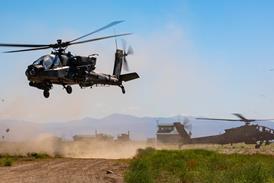Japan’s F-35 final assembly and check-out facility, run by Mitsubishi Heavy Industries in Nagoya, is on track to hit peak production next year when the country’s stealth fighter production tops out at six aircraft per year.
Mitsubishi Heavy Industries is contracted to deliver four F-35C fighters by the end of 2018, but may be able to deliver one of next year’s aircraft early, bringing the total to five, said Greg Ulmer, Vice President and General Manager of Lockheed Martin’s F-35 programme at the Farnborough Airshow.
“We just completed what we call company flight acceptance of the ninth Japan airplane,” he says. “And we’ve seen very strong performance from Mitsubishi Heavy Industries on the performance in the program.”
Local production of the aircraft’s engine – the Pratt & Whitney F135 – by Japan’s IHI will hit peak production this year at six turbines per year, says Matthew Bromberg, president of Pratt & Whitney Military Engines.
“They’ve produced three engines that will go to the Japanese Air Force,” he adds. “That facility will also be their depot. It will support not only the Japanese Air Force, but other regional requirements in the sustainment network.”
Lockheed Martin and Pratt & Whitney emphasise that final assembly and check out (FACO) facilities in Japan and Italy do not differ from their core facilities in the US in performance and automation.
“Jet engines are entirely complex. There are 10,000 different parts, clearances that are finer than a strand of hair, finishes that are finer than a mirror. We spin at 10,000 revolutions per minute. We operate at 2,000° plus – so you can’t get anything wrong,” says Bromberg. “When we automate in one of our primary assembly facilities in Middletown, Connecticut or West Palm Beach, [Florida] we will automate in each one of the FACOs as well. We use identical processes to ensure identical performance.”
Get all the coverage from the Farnborough air show on our dedicated event page
Source: Flight Daily News


























